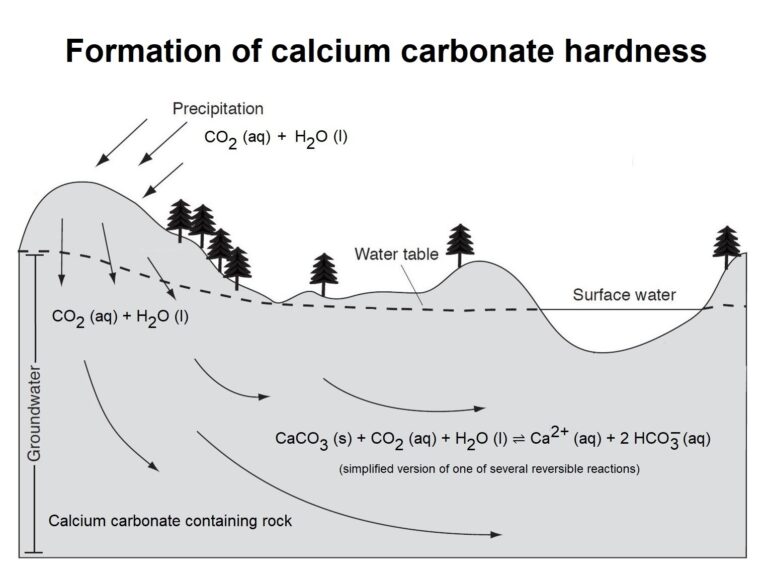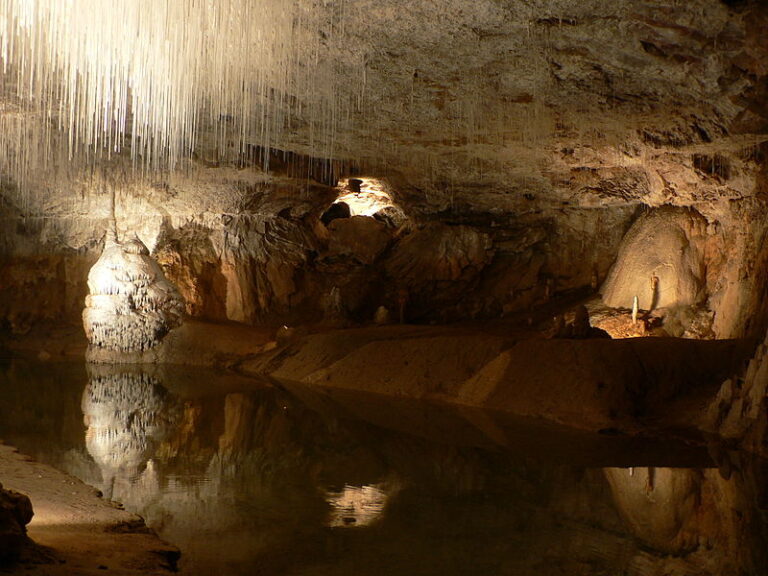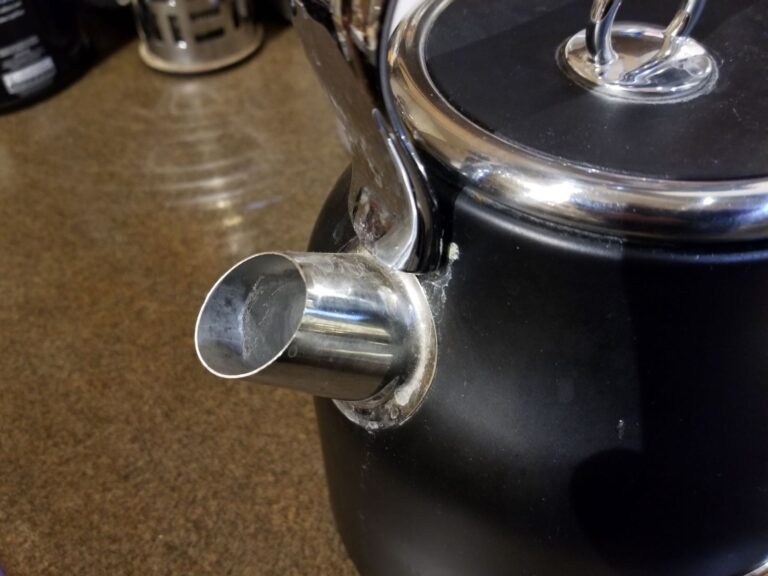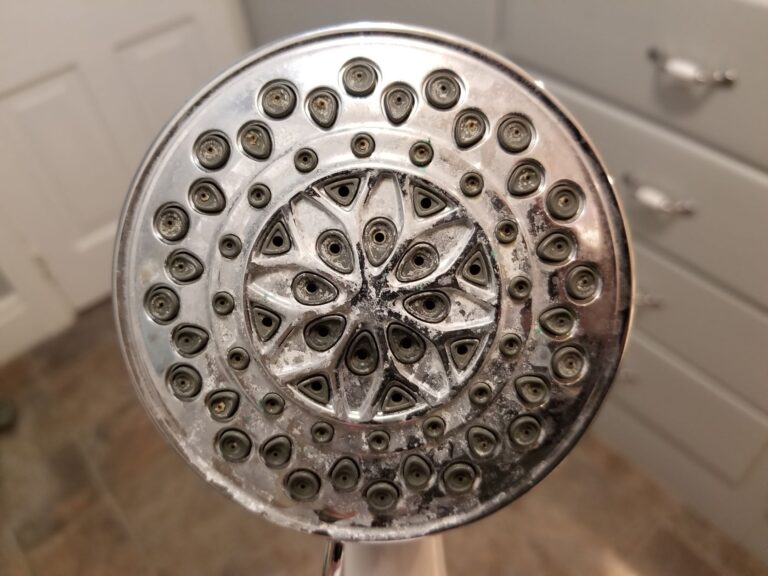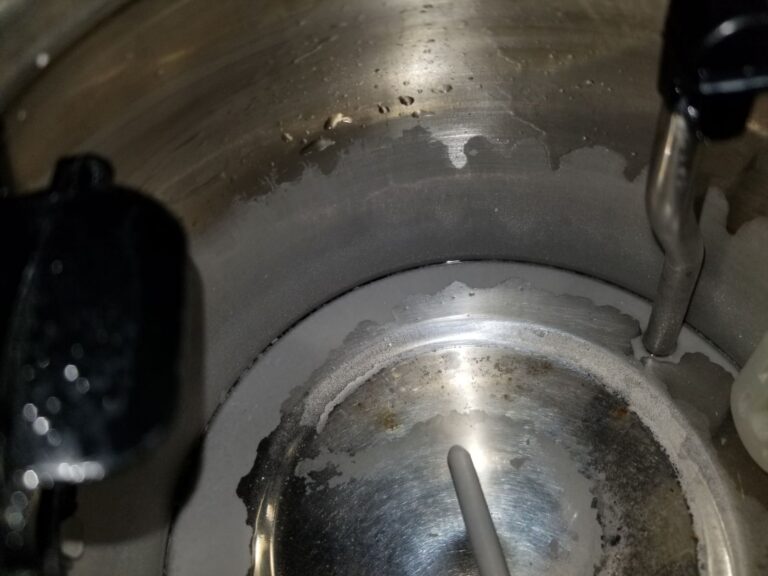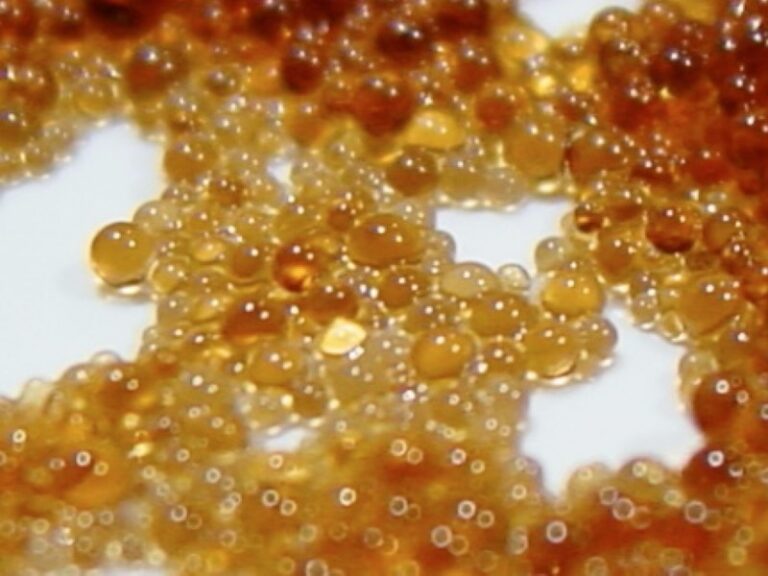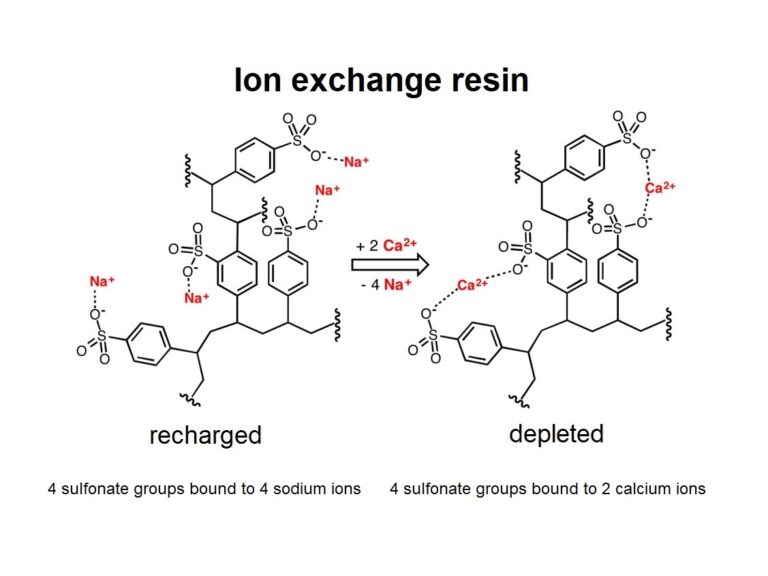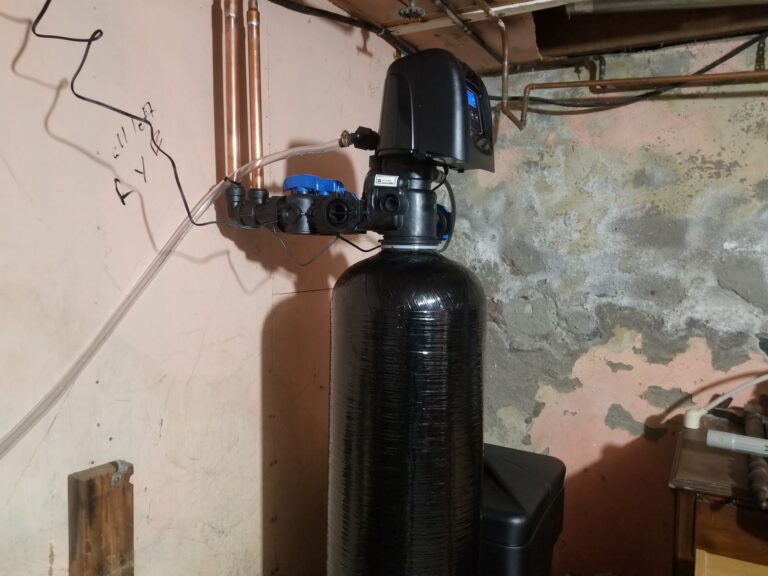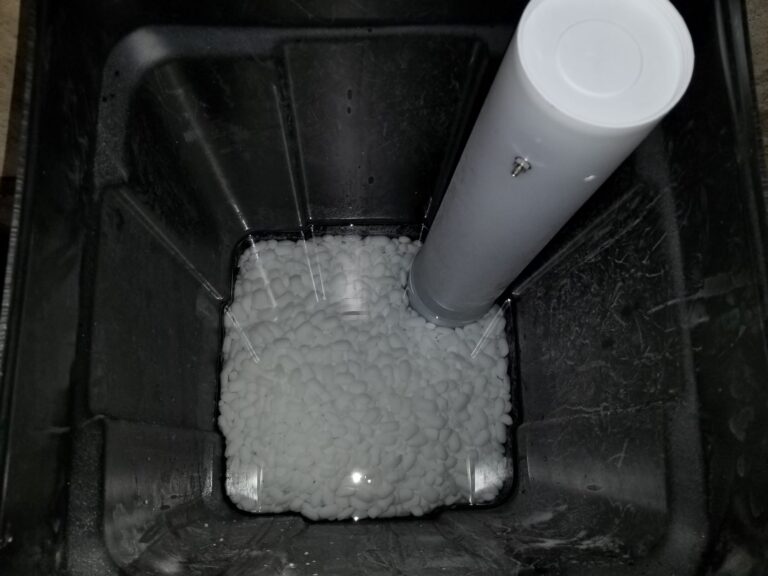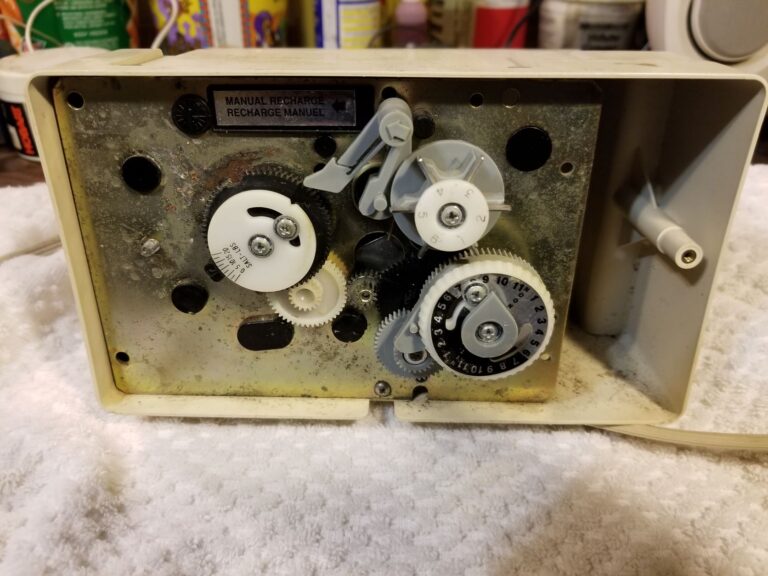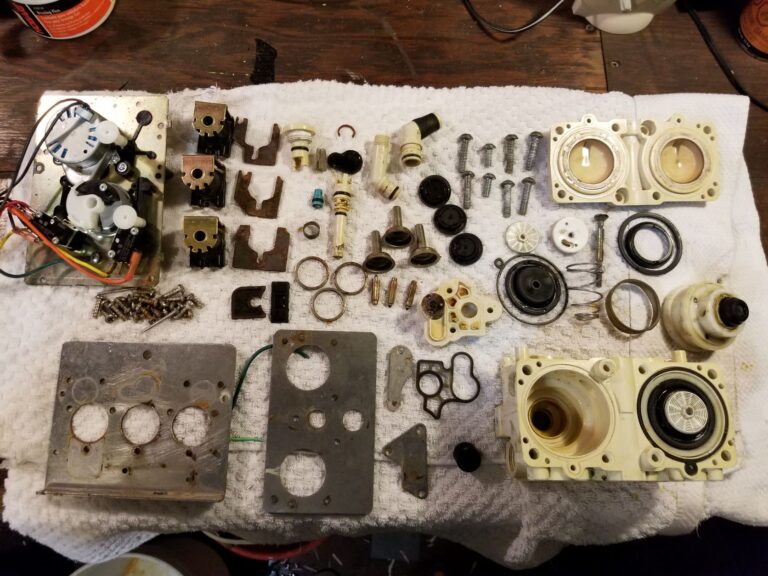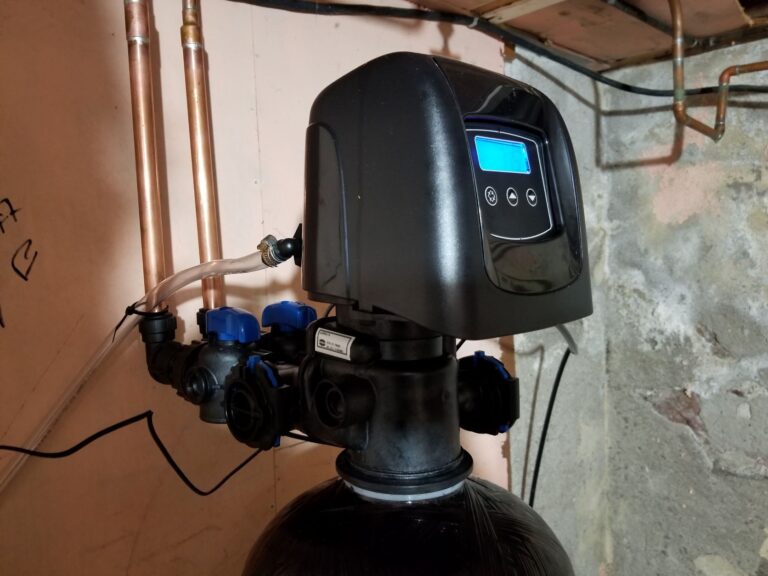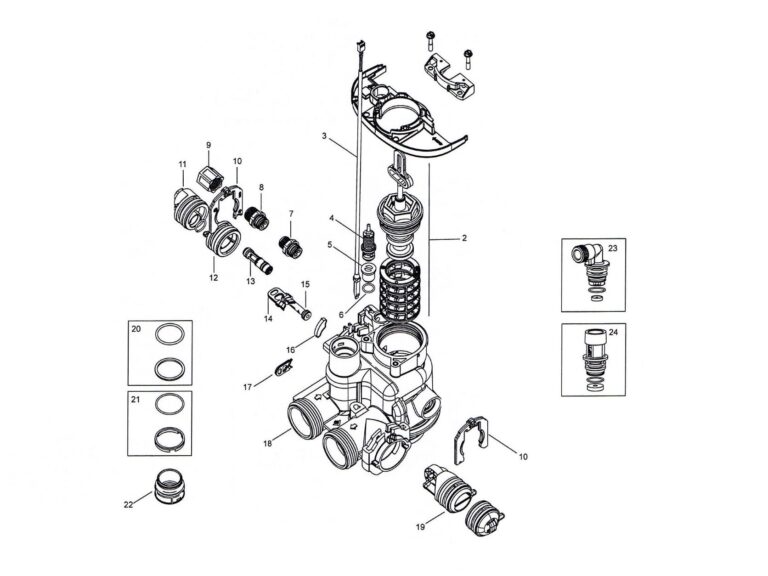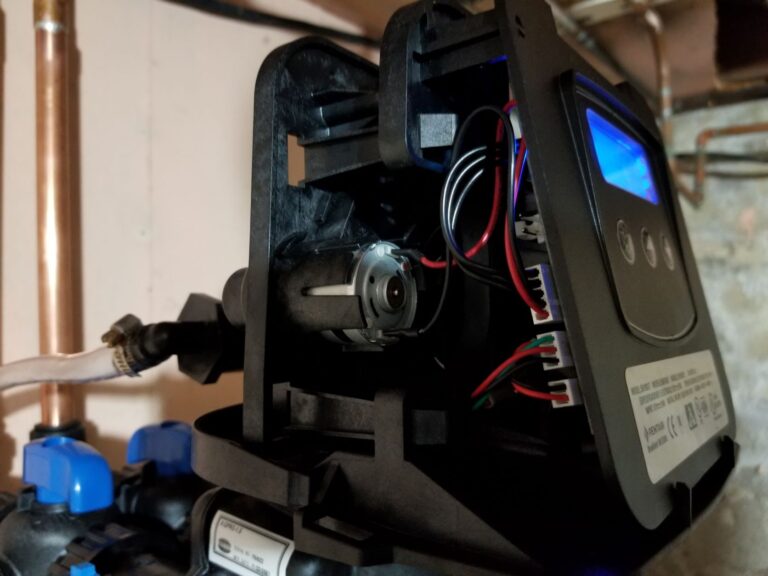Most anyone who lives here knows that we have hard water. But I was a bit shocked when my daughter Miranda told me our neighbourhood in particular was number one for hardness in Waterloo, and perhaps Canada. She’s a great researcher and did a ton of work finding out everything you’d need to know about water softeners so we could buy a new one. It turns out Kitchener and Cambridge have very hard water too. You need a water softener in Waterloo Region.
What is hard water?
Hardness is caused by the dissolved metal salts of calcium and magnesium, usually in carbonate form, along with other metals in lesser amounts. Hard water is found throughout the world. The hardest sources are usually underground where water and rock have lots of time to interact. The rainfall and snowmelt that percolates through the soil into the aquifer starts out soft but contains dissolved CO2. This leaches minerals like calcium or magnesium carbonate out of the rock turning the water hard.
Calcium carbonate, mostly found in limestone, is not very soluble so only a little heat makes it precipitate out. It’s the whitish scale in your kettle and is also found in stalactite and stalagmite formations in caves. Magnesium carbonate is found in a rock called dolomite. It’s very insoluble and ends up in your kettle too. These minerals aren’t harmful to humans or animals but play havoc with hot water heaters, dishwashers, laundry, kettles and even showering.
Hardness is commonly measured in grains, which is a US unit of measure. One grain is equivalent to 64.8 mg of dissolved calcium carbonate in 1 US gallon (3.8 litres). Soft water is 3.5 grains or less. Very hard water is anything over 10.5 grains.
Waterloo Region gets 75% of our water from local wells drawing from rock formations containing lots of limestone and dolomite, making our water very hard. The water here ranges from 17 to 38 grains. My water is 38. I love the taste of our water (and trust the quality completely) but its hardness is definitely a drawback.
Water softening
The easiest and most common way of treating hard water is the use of a water softener. The main component is a tank containing tens of thousands of plastic resin beads made of cross linked sodium polystyrene sulfonate. This synthetic chemical (invented in the 1930s) is known as an ion exchange resin and functions to remove calcium and magnesium ions from your water. There’s also a water soluble drug version, without the cross links, used to lower potassium levels in people.
When you turn on a tap or run the shower, hard water flows into the resin tank and comes in contact with the resin beads. Due to concentration gradients, calcium and magnesium ions in the hard water displace atoms of sodium bound to the active sulfonate groups in the resin. The released sodium ions combine with the carbonate ions left behind in the water to form sodium carbonate, Na2CO3. The newly softened water flows from the resin tank’s outlet, through the supply lines and out to the tap.
Sodium carbonate is also known as washing soda, a centuries old household cleaner and laundry additive. It’s thousands of times more soluble in water than calcium or magnesium carbonate. So it won’t precipitate out as scale or interfere with your soap which is great news for your plumbing, dishwasher and washer, water heater, kettle and even washing up. Softened water does have slightly elevated levels of sodium but not enough to cause danger. It affects taste though and I prefer hard water for drinking.
The resin in your softener can only soften so much water. At some point all the sodium ions will be exchanged and your softener will no longer function. Back in the old days (I remember this) you’d call to have the tank swapped out but nowadays all you need to do is run the recharge cycle on your machine.
Recharge timing is automated on modern machines using a flow meter that measures how much water you have used. Older softeners use a clock timer that would be set to recharge every few days, wasting a lot of salt and water. The recharge is usually set to run in the middle of the night when no one is turning on taps or flushing toilets.
The recharge cycle has a number of stages and takes a few hours to finish. The most important part of this for today’s explanation is the brine cycle. Water softeners have a salt tank that stores up to 100 kg of salt. It is partially filled with very salty water. Brine is drawn from this tank into the resin tank and, due to the very high concentration of sodium, reverses the ion exchange on the resin beads I’d mentioned earlier. The calcium and magnesium form salt compounds with the chlorine from the brine and are washed down the drain into the sewer.
After the resin is refreshed with sodium ions (and rinsed) the last step is the refill cycle on the brine tank. Fresh water is pumped into the tank which dissolves some more salt for the next recharge. So every few weeks you’ll need to add some salt to the tank. It’s a special high purity salt made just for softeners so don’t use anything else. 20kg bags are somewhere around ten bucks give or take.
Buying a softener
If you need a new softener, picking out a suitable one isn’t a trivial task for an area like Waterloo Region and especially my neighbourhood. You need to factor in extreme hardness, salt consumption and your daily water usage for starters. How much salt you use is a concern for your wallet and for the environment. And a machine that recharges too frequently wears out quicker than it should. It’s important you pick the right sized machine for your home. Our old one was clearly too small for our needs and is half the size of our new one. Here’s a buyer’s guide to help you out. Once you have the sizing sorted, what brand and model are you going to choose?
A caution, the hydraulic plumbing in a softener valve body is complicated. The quality of this component really matters. The valve body on my old Culligan machine used unpainted plain steel solenoid hold-downs in a salt heavy and damp location. Is it a surprise they rotted out? Is spending an extra 10 cents on stainless too much to ask? The 3 rusty hold-downs in my photo are replacements I made from steel stock. We also had warranty issues for a sticky valve inside the first year. Of course this problem returned after warranty expiry. I ended up tearing down the valve body several times over 20+ years until it finally failed for good.
Whatever you buy, reviews and brand reputation should be carefully scrutinized. Some brands are definitely over-priced while others are way too cheap and poorly made. Make sure you can easily get replacement parts or service. As well, I would shy away from rentals or rent to own plans as these are never good value.
I wanted a quality softener I could install myself that also had a warranty. That sounds a lot like a rainbow unicorn but my daughter found us Aquatell out of London who offer exactly this. They have fantastic reviews and carry well regarded softeners made by Pentair. Their website has an easy to use calculator to make sure you get the right size machine for your home. The softener showed up at our door a week after ordering despite being told they were behind due to covid and supplier issues.
I installed ours without issue in half a day, including removing the old one. A shortage of 3/4 inch copper fittings at several hardware stores was my biggest hurdle, and it took me a few hours to fab up new supply pipes because I am slow and also careful. It’s never good to light your house on fire soldering new pipes into your basement ceiling. A plumber would be much faster than me and might want a few hundred to hook one up if you don’t do DIY like I do.

